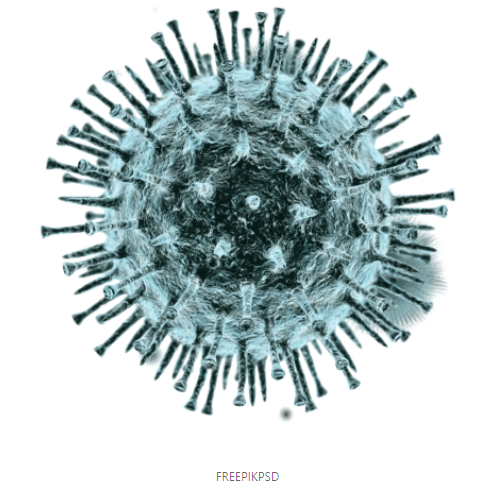
The Coronavirus Disease 2019 (COVID-19) Outbreak from the Perspective of a Scientist, Epidemiologist, and Medical Writer
By Elizabeth Clarke, PhD, MPH, MS
March 9, 2020
Globally, coronavirus (COVID-19) has infected an estimated 110,700 people in 97 countries, resulting in at least 3,453 deaths (all but 716 in mainland China) attributable to the virus.[i] Since COVID-19 first entered the United States in January 2020, the number of U.S. cases has climbed to over 300, resulting in 15 deaths.[ii] In addition, the virus may be capable of spreading within local community given that two Washington-based cases, both of which resulted in patient death, were genetically linked, since in both cases the virus contained a rare genetic variation (identified in two of 59 sequenced samples from China).[iii] The COVID-19 mutability was investigated by a team of researchers at Peking University, who determined that within China, the COVID-19 virus has mutated at least once into two strains, an “L” type which peaked in the early stages of the outbreak but has since decreased in prevalence and an evolutionarily older, less aggressive “S” type, which the need for global efforts that examine connections between COVID-19 epidemiology, genomic data and patient chart records.[iv]
The World Health Organization (WHO) director-General Tedros Adhanom Ghebreyesus summarized the COVID-19 mortality rate to date, noting that “globally, about 3.4 percent of reported COVID-19 cases have died,” and “by comparison, seasonal flu generally kills far fewer than 1 percent of those infected.”[v] While this may at first glance seem to imply that COVID-19 is considerably deadlier than the seasonal flu, the total number of documented COVID-19 cases (part of the death rate denominator) may be underestimated given that over 80% of cases have resulted in mild symptoms (ie, no pneumonia, or only mild pneumonia) [vi], which can lead to the virus going undetected. Additionally, given the novelty and unpredictability of COVID-19, annual data are not yet available for the virus, as they are for seasonal flu data, and the majority who have died from COVID-19 were located in the outbreak-related resource-strained Hubei province in China.
Efforts to mitigate the spread of COVID-19 infection have involved quarantines and other restrictive measures,[vii] molecular testing,[viii] administering antiviral drugs such as the investigational antiviral remdesivir (Gilead Sciences),[ix] and vaccine development. [x] However, concern has been mounting over global shortages on personal protective equipment, devices, and drugs resulting from the COVID-19-fueled demand and manufacturing issues occurring in mainland China facilities. Protection from and treatment for COVID-19 are not immune to the impact, which limited production of key drug ingredients.[xi] Thus far, the U.S. FDA confirms there are no medical device shortages due to the COVID‑19 outbreak, but noted that the 63 companies (with 72 manufacturing facilities in mainland China) contacted are subject to supply interruption and consequent shortages.[xii] Since COVID-19-related quarantines prohibit workers from manufacturing viral drugs, medical devices and personal protective equipment in mainland China, there is a risk for impacting the supply of drugs actually needed to treat the virus.[xiii]
Given the public health impact and rapid spread of the virus, several companies are already clamoring to develop treatments and vaccines for COVID-19.[xiv] After FDA rapid review and acceptance of Gilead Sciences’ IND filing for remdesivir as a potential treatment for COVID‑19, the company is spearheading two randomized, open label, multicenter Phase 3 trials to determine the safety and efficacy of the drug in patients infected with the virus. In addition, Moderna Therapeutics just initiated a phase 1 study evaluating the safety of its mRNA-1273 COVID-19 vaccine, developed only 42 days after COVID-19 was sequenced.[xv] In late February, the US FDA issued a new policy designed to promote the development of more rapid diagnostic testing by allowing use of newly developed and validated COVID-19 diagnostics before the FDA reviewed their Emergency Use Authorization (EUA) requests[xvi]. Additionally, to meet the ever-increasing demand among healthcare personnel for protective respirators, certain National Institute for Occupational Safety and Health (NIOSH)-approved respirators not currently FDA-designated for use in a health care setting are as of March 2 being permitted for during the coronavirus (COVID-19) outbreak. On March 6, a bill was signed into law funding $8.3 billion to support COVID-19 testing and fund other measures to mitigate the spread of the outbreak.[xvii]
As Medical Writers and global communicators in the health care space, we have the responsibility to accurately report evidence- and science-based information. In the regulatory space, medical writers play a pivotal role in getting drugs, diagnostics and devices to COVID-19 patients, as evidenced most recently with Gilead Sciences’ IND filing for remdesivir. Scientific contributions to public medical literacy surrounding COVID-19 is particularly important given the panic induced by the virus. Clearly communicating the science and the facts surrounding fears of a pandemic, the rush on face masks, the methods of viral transmission greatly benefit public and individual health. Together we play an important role in getting new drugs to the market and improving global patient care. In times like these, working collectively with urgency and skill can make a significant impact on global health.
[i]https://www.nytimes.com/interactive/2020/world/coronavirus-maps.html
[ii]https://www.worldometers.info/coronavirus/usa-coronavirus/
[iii]https://www.nytimes.com/2020/03/01/health/coronavirus-washington-spread.html
[iv]https://www.msn.com/en-us/health/health-news/coronavirus-has-mutated-at-least-once-into-two-strains-study-finds/ar-BB10NALk?ocid=spartanntp
[v]https://www.who.int/dg/speeches/detail/who-director-general-s-opening-remarks-at-the-media-briefing-on-covid-19---3-march-2020
[vi]https://www.who.int/docs/default-source/coronaviruse/situation-reports/20200301-sitrep-41-covid-19.pdf?sfvrsn=6768306d_2
[vii]https://www.sciencemag.org/news/2020/03/china-s-aggressive-measures-have-slowed-coronavirus-they-may-not-work-other-countries
[viii]https://www.cnbc.com/2020/02/28/amid-testing-capacity-concerns-cdc-unveils-new-coronavirus-test-kits.html
[ix]https://www.nih.gov/news-events/news-releases/nih-clinical-trial-remdesivir-treat-covid-9-begins
[x]https://www.cnn.com/2020/03/03/politics/coronavirus-funding-fight-congress/index.html
[xi]https://www.cnn.com/2020/02/28/health/coronavirus-us-drug-shortage/index.html
[xii]https://www.reuters.com/article/us-china-health-usa-fda/u-s-fda-says-no-medical-device-shortages-due-to-virus-outbreak-idUSKCN20L30B
[xiii]https://edition.cnn.com/2020/02/29/health/fda-medical-device-mask-hospital-shortage/index.html
[xiv]https://www.statnews.com/2020/03/02/coronavirus-drugs-and-vaccines-in-development/
[xv]https://investors.modernatx.com/news-releases/news-release-details/moderna-ships-mrna-vaccine-against-novel-coronavirus-mrna-1273
[xvi]https://www.fda.gov/news-events/press-announcements/coronavirus-covid-19-update-fda-issues-new-policy-help-expedite-availability-diagnostics
[xvii]https://www.reuters.com/article/us-health-coronavirus-usa/trump-signs-83-billion-bill-to-fight-coronavirus-expand-testing-idUSKBN20T235